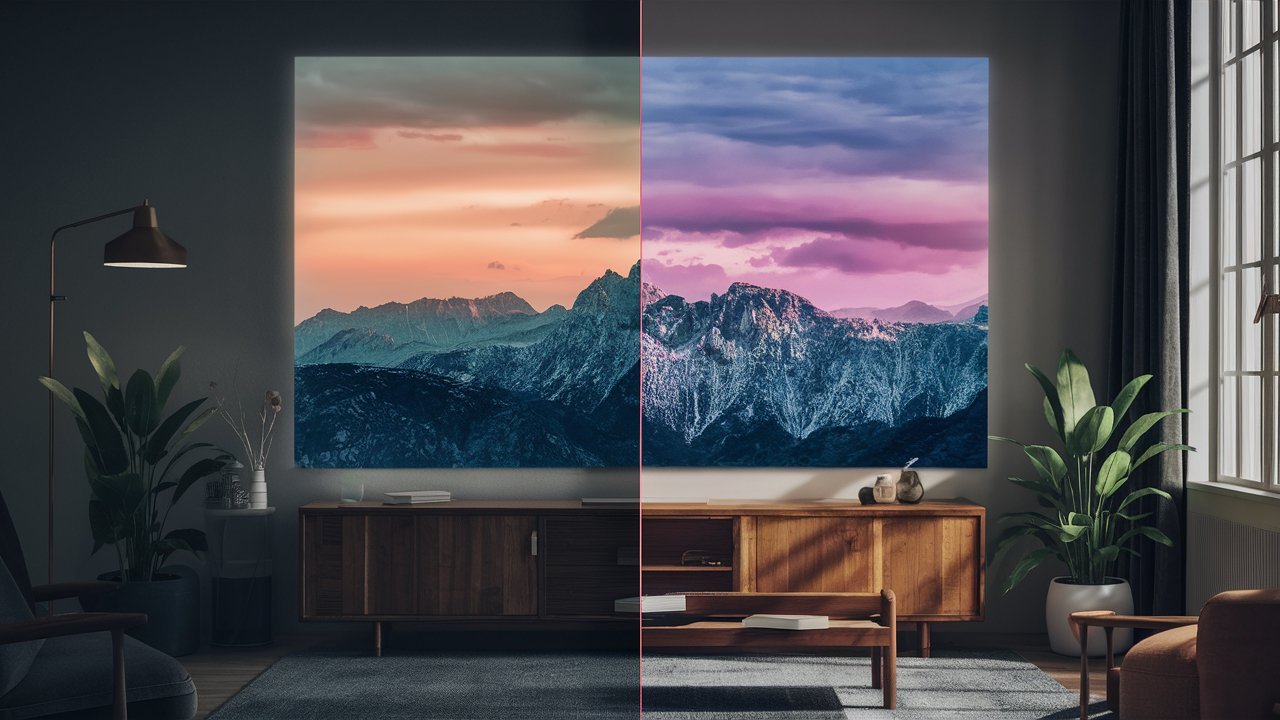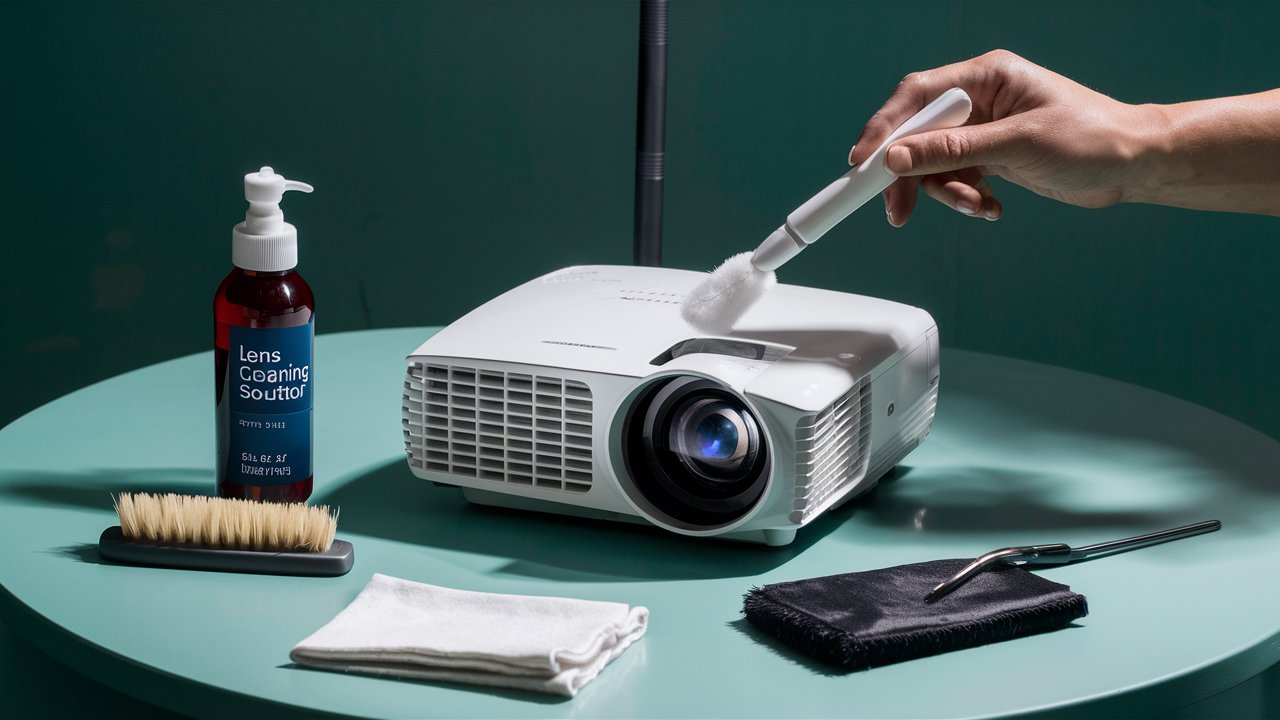Projectors are excellent for home shows, presentations, and other entertainment, but you might at times wonder how to make a projector brighter. For a clear and vivid picture, especially in different lighting situations, make sure your projector is as bright as it can be.
In this detailed guide, we’ll discuss several approaches to make your projector brighter, from changing the settings to thinking about hardware changes.
Why Brightness is Important?
The light of the projector has a significant impact on how good the picture looks. Even in brightly lit spaces, a brighter projector guarantees crisp, colorful images. If the brightness isn’t right, pictures can look washed out, colours may not be vibrant, and details may be lost.
Lumens are a common way to measure how bright a projector is, and picking the right light count for your space is very important.
Read More: Understanding Laser Projector Brightness: Everything You Need to Know
How To Make a Projector Brighter?
1. Change the settings on the projector
Changing the settings on your projector is one of the easiest ways to make it brighter. Most projectors have brightness and contrast settings that can be changed. Playing around with these can have a big effect on how bright something seems.
- Brightness Settings: Go to the projector’s menu and turn up the brightness. But be careful—setting it too high could shorten the lamp’s life or make the picture too bright and harsh.
- Contrast Adjustments: Changing the contrast can make the light look better. When the contrast is turned up, the picture has more depth because the blacks are darker and the whites are brighter.
There are different color settings on many projectors, such as “Bright,” “Dynamic,” and “Cinema.” If you switch to a brighter mode, the lighting will be better, but the colors might not be quite as true.
2. Control Ambient Lighting
Light in the room can make a projection much less useful. You can make a big difference by controlling the light in the room where the projector is used.
- Lighting in the room: Using blackout shades or blinds to block out outside light. This helps make the room darker, which makes the projector’s light stand out more.
- Using Ambient Light Rejection (ALR) Screens: ALR screens are made to bounce the light from the projector and block light from other sources. These screens can make images much brighter in places with a lot of light.
- Strategic Placement: Put the projector and screen where they will have the least amount of effect from the light in the room. Do not put the screen next to big windows or other sources of light.
3. Replace or improve the lamp
Finding out how bright a projector is depends a lot on its lamp. Lighting in projectors gets dim and less effective over time.
Projector lights usually last between 2,000 and 4,000 hours. Lighting gets less bright as it gets older. Changing the lamp might be necessary if your projector is getting dim.
Carefully choose a lamp that works with your projector type when replacing it. Installing something correctly means following the manufacturer’s instructions. Some projectors let you update the lamps. A higher-power lamp can make things brighter. Request improvements from the company that made your projector.
4. Clean and Maintain Your Projector
An important drop in brightness can be avoided by doing regular repairs. The lens and internal parts of the projector can get dirty and dusty, which lowers the light output.
- Clarification: Dust on the lens and screens can block light, making the picture look darker. Consistent cleaning guarantees the best performance and maximum light output.
Instructions for Cleaning:
- Lens Cleaning: Wipe the glass gently with a microfiber cloth. Not using harsh poisons.
- Filter Cleaning: If the air filters are clogged, check them and clean them. In addition to making the lamp last longer, this helps keep the airflow and temperature just right.
- Opening the projector and carefully cleaning the inside parts with a can of compressed air is possible if you feel safe doing so.
- Maintaining Your Projector: To keep your projector in great shape, make a monthly maintenance plan. Lens and filter cleaning should be done every couple of months, or more often if used in a dusty area.
Read More: The Ultimate Guide to Projector Maintenance in 2024
5. Make sure you use a high-gain screen
The brightness of the projected picture can be affected by the screen you use positively. Higher-gain screens are made to bounce more light back to the viewer, which makes the picture brighter.
- Material: High-gain screens are made of materials that reflect light better than regular screens. Ideal for places with lots of natural light.
- Advice on how to put a high-gain screen: Make sure the screen is set up so that it reflects the most light into the room. To get the best results, follow the manufacturer’s instructions correctly.
- Examining Screens: High-gain screens are brighter than regular screens, but their viewing angles may be smaller. See what the trade-offs are and how they affect your watching environment and needs.
6. Optimize the Projection Distance and Size
The brightness can be changed by the projector’s distance from the screen and the image’s size.
- Projector Distance: If you put the projector too far away from the screen, the light may not be spread out evenly, making the picture less bright. Putting it too far away, on the other hand, can make the picture too small.
- Size of the Image: To look bright, bigger pictures need more light. Lessening the size of the picture can focus the light, making it look better.
- Tips for Adjustment: Try putting the picture farther away or bigger to see what works best in your room. To change the size of the picture without moving the projector, use the zoom feature.

7. Consider Upgrading to a Brighter Projector
Sometimes, getting a projector with more light is the best thing to do.
If you’ve tried all of these things and the picture is still too dim, it might be time to get a new projector. If you want more brightness, look for models with better lumen ratings.
- Choosing the Right Projector: When looking for a new projector, you should think about the brightness, color, and number of lumens. 1,500 to 2,500 lumens is generally enough for home theaters. Projectors with 3,000 lumens or more are good for places that aren’t very dark.
- Benefits vs. Costs: Weigh the advantages of a clearer picture against the costs of updating. The picture quality of projectors with more lumens is much better, but they tend to be more expensive.
Conclusion
Making sure that your projector is as bright as it can be can greatly improve your watching experience. You can get a brighter, clearer picture in several ways, such as by changing the settings or thinking about getting new gear. To keep your projector’s brightness at its best, you need to do regular maintenance, set up your room strategically, and know what it can do.
By using these tips, you can get a clear, high-quality screen that works for you, whether you’re watching movies at home, giving talks at work, or learning.
Questions People Ask (FAQs)
What number of lumens does a projector need to be visible?
The right light count depends on where you are. 1,500 to 2,500 brightness is usually enough for home theaters. Think about projectors with 3,000 lumens or more for offices or places that already have a lot of light.
Can I use my projector in a place with a lot of light?
Yes, but some changes need to be made. It can help to use an ALR screen, adjust the background lighting, and turn up the projector’s brightness.
How often should I change the lamp on my projector?
About 2,000 to 4,000 hours is how long most projection lamps last. When you notice a lot of fading or get a warning from the projector, it’s time to get a new one.
Is it really important to clean the projection lens?
A clean lens lets the most light through, which makes the picture much brighter and clearer.
How can I tell if the lamp in my projector is getting old?
Some signs are a picture that seems to be getting darker, flickering, or a message from the projector telling you to be careful.




